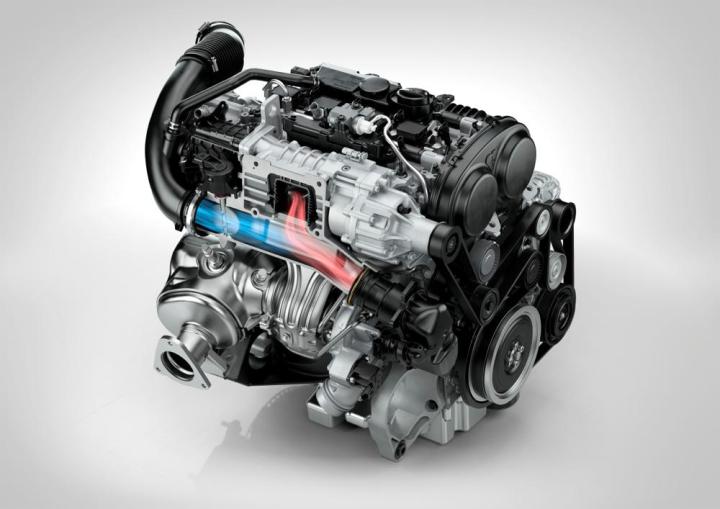
Volvo is launching a new line of engines that it says will increase fuel efficiency without sacrificing power.
Called Drive-E, the new Volvo Engine Architecture (VEA) powerplants will start showing up in the United States early next year. Like Mazda’s Skyactiv and Honda’s Earth Dreams engines, Drive-E uses conventional technology to get the most out of internal combustion.
Volvo will offer two Drive-E engines in the United States, both 2.0-liter four-cylinders. The base engine is turbocharged, producing 240 horsepower and 258 pound-feet of torque. A more powerful performance version, with both turbocharging and supercharging, will have 302 hp and 295 lb-ft. Volvo says the supercharger will kick in at low rpm, building torque and giving the engine a naturally aspirated feel; the turbo can then take over as revs build.
Volvo says the new engines are also lighter than comparable predecessors; up to 100 pounds in the case of the performance version.
The Drive-E engines also feature a stop-start system. Volvo’s version of this now-popular feature measures brake pressure to determine when the engine should be shut off. It also features an electric oil pump for the transmission and a new starter motor.
Both engines will be offered exclusively with an eight-speed automatic transmission and front-wheel drive; Volvo will keep some of its current engines for use in all-wheel drive vehicles.
Volvo says Drive-E tech will improve fuel economy by 13 to 26 percent, while still offering the power of larger engines.
Right now, the base Drive-E 2.0-liter matches the power of BMW’s 2.0-liter turbocharged inline four (240 hp, 255 lb-ft), while the double-charged version comes pretty darn close to the power output of Bimmer’s turbocharged inline-six (300 hp, 300 lb-ft). EPA fuel economy ratings will be released closer to the engines’ early-2014 on-sale date.
Volvo isn’t stopping there, though.
“A four-cylinder, transversely mounted engine is a way of building up for an electrified future,” Derek Crabb, Volvo vice president of powertrain engineering, said in a statement. “Hybrids are definitely going to be a dominant part of the top end of our range.”
Crabb said that, by teaming one of the Drive-E four-cylinders with electric power, Volvo could “reach power figures in the V8 territory.” And, yes, we’re immediately imagining careening the Volvo Coupe Concept around some country roads, powered by a 400-hp four-cylinder.
With a line of fuel efficient conventional powertrains and V8-rivaling hybrids, Volvo’s new tagline could be “Don’t Drive Angry, Drive-E.”
Drive-E will be in showrooms early next year. Check back in January for our first drive review of the all-new Swedish engines.


